Microsoft unveils Direct X 12, lists benefits for Mobile
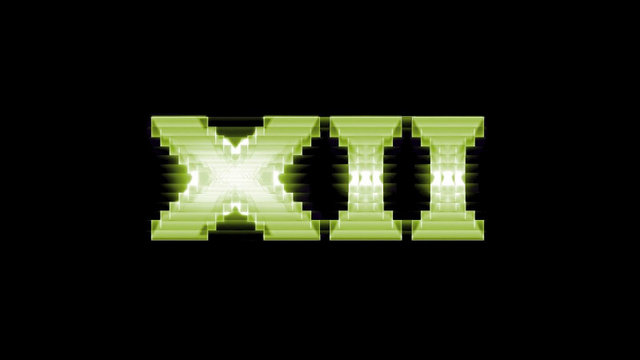
After a long wait, Microsoft has finally unveiled its plans for the next generation of its graphics APIs, Direct X. These APIs were developed by Microsoft for making game development easier on Windows and eventually on all of its other platforms. It provided a standard way, an abstracted layer, for developers, to take advantage of complex graphics hardware. This spurred the PC gaming industry, until the recent years, in which the development of the API tapered off, with evolutionary additions.
With Direct X 12, which is apparently a big departure from the current programming model, Microsoft hopes to reinvigorate game development on all its products, right from PCs to phones, tablets and of course, the Xbox One. Direct X 12 was revealed at the Game Developers Conference with hardware partners in AMD, Nvidia and Qualcomm, to name a few, and will ship on products starting 2015.
Direct X 12 will apply to all Microsoft products, which is hence a single API to code for all form factors. This includes mobile of course, with Windows Phone 8 already supporting Direct X. But what are the benefits of DX 12 on mobile, you ask?
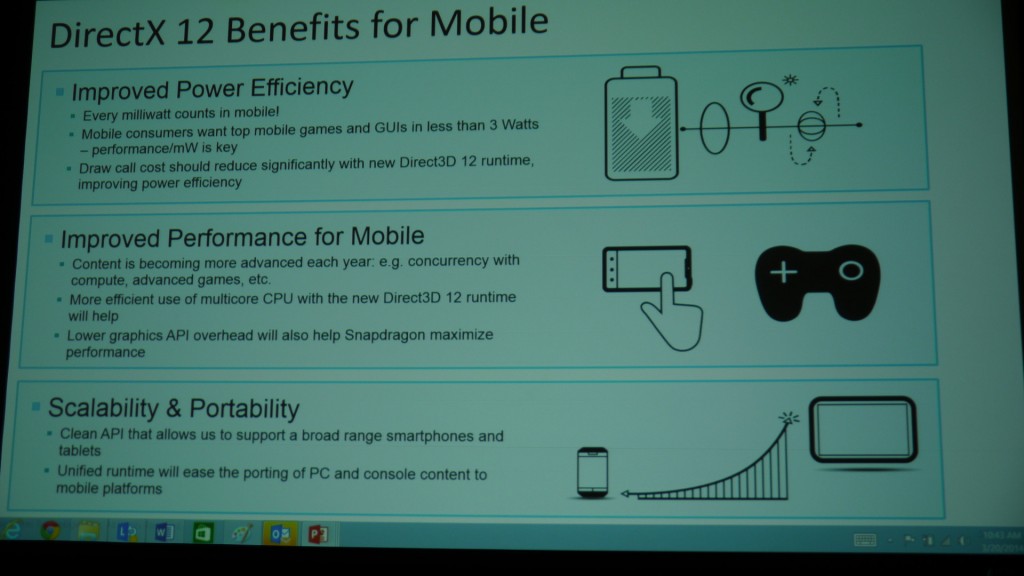
Taken from the GDC presentation, this lists the benefits of DX12 for mobile. The main three takeaways here are improved power efficiency, improved performance through use of multicore CPU and scalability with a standardized API and runtime, which will ease porting to mobile. Qualcomm is the only mobile partner that will support Direct X 12, as they have been the only exclusive provider for Windows Phone ever since its inception. Windows Phone Blue will be supporting many chipsets like the Snapdragon 200, 400 as well as 800 and the newer ones, and we expect to see Direct X 12 compatibility in all of those. Could this mean better games on Windows Phone due to easy porting? Well, since 2015 is far away, it’s not clear whether porting will be that easy, but we sure hope it is, by the time it matures.
Microsoft promises to reveal more information about Direct X 12 at the Build developer event next month. We’ll be tracking this closely, so keep checking the blog for the latest news on Direct X 12, with a focus on mobile.
Nokia Lumia 930 and 630 may be unveiled at the Build conference
The Windows Phone 8.1 update is expected to arrive at the Microsoft BUILD conference, which starts on April 2. According to rumors it won't come alone – the Lumia 930 (Martini) and Lumia 630 (Moneypenny) may be unveiled at the same conference.
The Nokia Lumia 930 is meant to be a GSM version of the Lumia Icon. There will be differences though, the screen is said to be 4.5" instead of 5". There might be other changes too, similar to how the Lumia 925 differed from Verizon's 928.
Anyway, earlier rumors pointed to April 19 as the Lumia 930 launch date, but Microsoft and Nokia may have moved up the schedule.
The Nokia Lumia 630 will succeed the 620, which got lost in the shadow of the highly popular Lumia 520. Its rumored specifications include a dual-SIM options (a first for WP), 4.3" WVGA screen and a Snapdragon 400 chipset.
Apple secures advanced multitouch stylus patent
Apple is working on a stylus with an extendable nib with multiple tips and a built in light sensor. The information comes from patent images secured by AppleInsider.The nib on the stylus is flexible and can either work almost entirely from within the chassis of the stylus for drawing thin lines or be extended so as to deliver multiple touch zones like a paintbrush.

With the exposed nib protruding more from the stylus' body, the tablet's GUI could produce different output color, opacity, etc.

There will be an actuator on te stylus which will either extend the nib or the multiple tip strands, which will act like a paintbrush tip. Both the nib and the miltuple strands tip will extend out of a single hole so the stylus may include some kind of collar system built in.

The stylus' strands could feature light-transmissive tips through which data could pass. Taking in light information through those tips the stylus could be able to inform the tablet to change a line's color, choose certain patterns or change the brush type.

The light sensing capabilities may instead be used to read and apply real life colors.
This advanced stylus patent was first filed in 2012 and was granted today.
Xiaomi Redmi Note with 5.5-inch HD display, octa-core processor announced
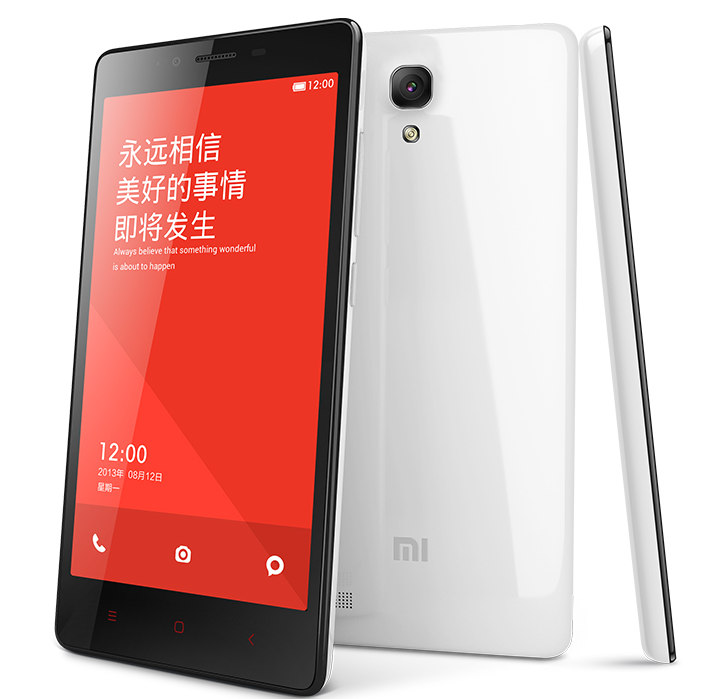
Xiaomi has announced Redmi Note, the successor of the Redmi / Red Rice smartphone in China. It was confirmed earlier this week and comes with a 5.5-inch (1280 x 720 pixels) IPS display based on OGS technology and 178-degree wide viewing angle, powered by a 1.4 GHz / 1.7 GHz Octa-Core MediaTek MT6592 processor with Mali 450 GPU and runs on MIUI v5 based on Android 4.2 (Jelly Bean). It has a 13-megapixel rear camera with 28mm lens with f/2.2 aperture, LED flash and a 5-megapixel front-facing camera.
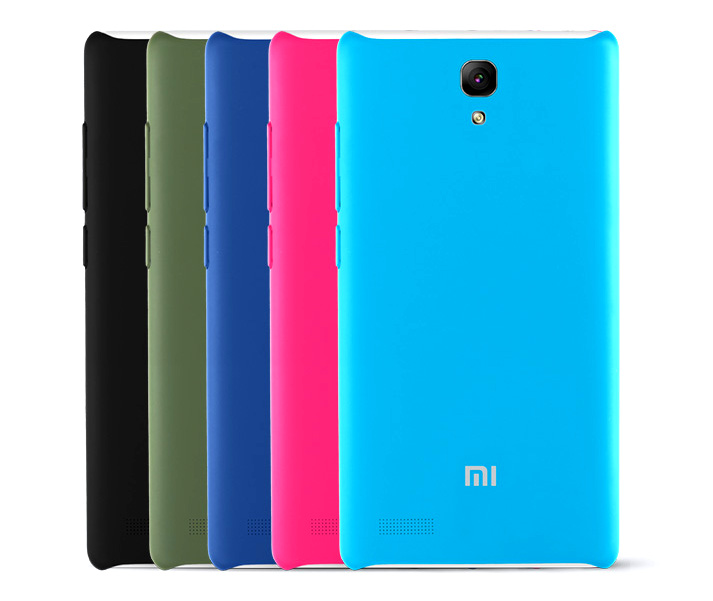
It comes with dual SIM support with TD-SCDMA on one slot and GSM on other slot. WCDMA variant is also expected soon for the international markets.
Xiaomi Redmi Note specifications
- 5.5-inch (1280 x 720 pixels) IPS display
- 1.4 GHz / 1.7 GHz Octa-Core MediaTek MT6592 processor with Mali 450 GPU
- MIUI v5 on top of Android 4.2 (Jelly Bean)
- Dual SIM (TD-SCDMA and GSM)
- 13MP rear camera with LED Flash, f/2.2 aperture, 1080p video recording
- 5MP front-facing camera
- 1GB / 2GB RAM, 8GB internal memory, micro SD card up to 32GB
- 3G (TD-SCDMA), WiFi 802.11 b/g/n, Bluetooth 4.0, GPS
- 3200 mAh battery
Karbonn Titanium Hexa with 5.5-inch 1080p display, hexa-core processor, Android 4.4 launched for Rs. 16990
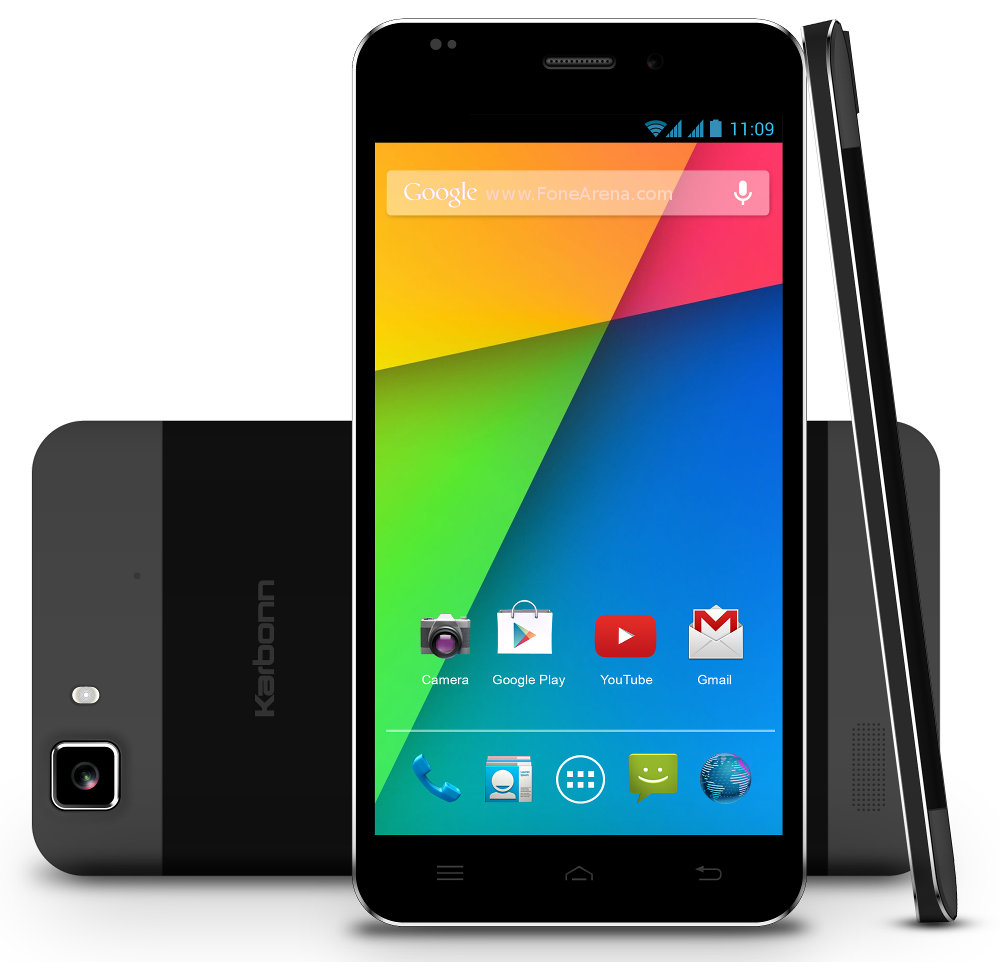
Karbonn has launched Titanium Hexa, the company’s latest smartphone with a hexa-core processor. It has a 5.5-inch (1920 x 1080 pixels) LTPS (Low temperature polysilicon) type display with scratch resistant and oleophobic coating, powered by 1.5 GHz hexa-core MediaTek MT6591 processor with true multi-core solution and runs on Android 4.4 (KitKat). It has a 13-megapixel auto focus rear camera with LED Flash and a 5-megapixel front-facing camera.
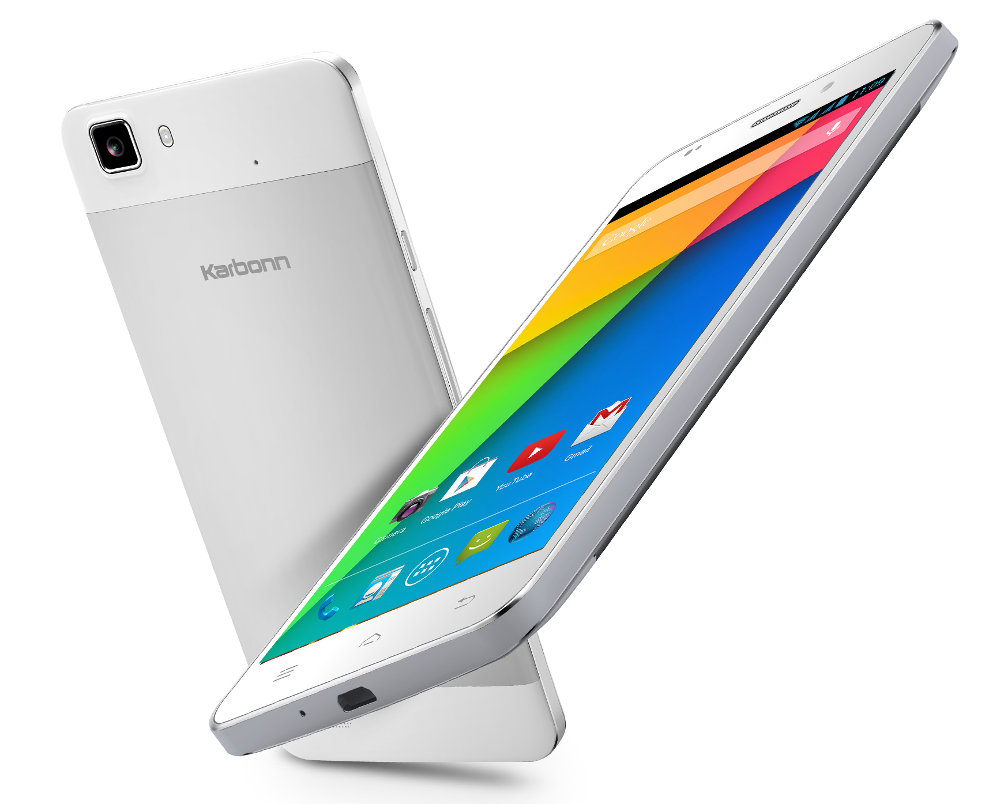
It packs 2GB RAM and 2050 mAh battery. Karbonn becomes the first Indian company to launch a smartphone running on Android 4.4 (KitKat) and with MediaTek’s Hexa-Core chip.
Karbonn Titanium Hexa specifications
- 5.5-inch (1920 x 1080 pixels) Full HD LTPS display
- 1.5 GHz hexa-core MediaTek MT6591 processor
- Android 4.4 (KitKat)
- Dual SIM
- Dimensions : 154×76.8×6.9 mm
- 13MP auto focus camera with LED Flash
- 5MP front-facing camera
- 2GB RAM, 16GB internal storage, expandable memory up to 32GB with microSD
- 3G HSPA+ (up to 42.2 Mbps), Wi-Fi 802.11 b/g/n, Bluetooth, GPS, USB OTG
- 3.5 mm audio jack
- 2050 mAh battery
Karbonn Titanium Octane and Octane Plus with octa-core processors, Android 4.4 launched for Rs. 14490 and Rs. 17990
Karbonn launched Titanium Octane and Titanium Octane Plus smartphones with MediaTek MT6592 Octa-core chips along with the Titanium Hexa. The Karbonn Titanium Octane has a 5-inch (1280 x 720 pixels) display and the Octane Plus has a 5-inch (1920 x 1080 pixels) full HD IPS display. Both these smartphones run on the Android 4.4 (KitKat) OS. The Karbonn Titanium Octane Plus would compete with the recently launched Micromax Canvas Knight A350 that has similar features.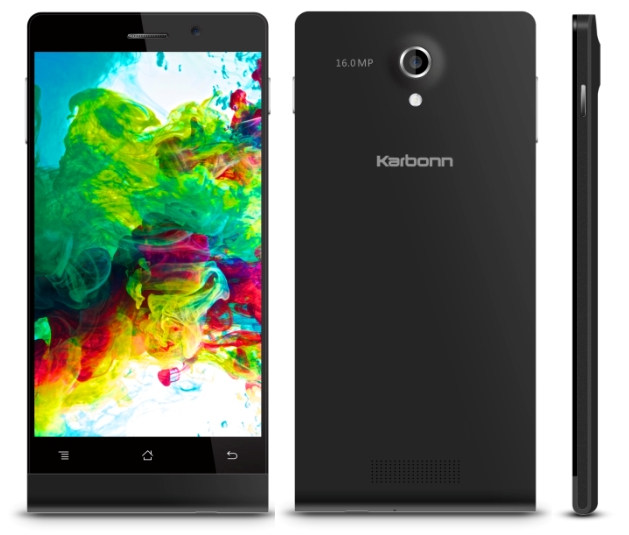
The Karbonn Titanium Octane has a 13-megapixel auto focus rear camera with LED Flash and a 5-megapixel front-facing camera and the Octane Plus has a 16-megapixel auto focus rear camera with LED Flash and a 8-megapixel front-facing camera. The Octane has 1GB RAM and the Octane Plus has 2GB RAM. Both these have 16GB of internal storage with expansion slot and 2000 mAh battery.
Even though Karbonn had already launched a range of smartphones with MediaTek chips, the Octane and the Hexa in the Titanium series would be the first smartphones from the company to come with octa-core and hexa-core chips.
Karbonn Titanium Octane specifications
- 5-inch (1280 x 720 pixels) HD IPS display
- 1.7GHz octa-core MediaTek MT6592 processor with Mali 450-MP4 GPU
- Android 4.4 (KitKat)
- Dual SIM
- Dimensions : 145.7×71.2×7.9 mm
- 13MP auto focus camera with LED Flash
- 5MP front-facing camera
- 1GB RAM, 16GB internal storage, expandable memory up to 32GB with microSD
- 3G HSPA+ (up to 42.2 Mbps), Wi-Fi 802.11 b/g/n, Bluetooth, GPS
- 3.5 mm audio jack
- 2000 mAh battery
- 5-inch (1920 x 1080 pixels) Full HD IPS display
- 1.7GHz octa-core MediaTek MT6592 processor with Mali 450-MP4 GPU
- Android 4.4 (KitKat)
- Dual SIM
- Dimensions : 147.3×72.6×7.6 mm
- 16MP auto focus camera with LED Flash
- 8MP front-facing camera
- 2GB RAM, 16GB internal storage, expandable memory up to 32GB with microSD
- 3G HSPA+ (up to 42.2 Mbps), Wi-Fi 802.11 b/g/n, Bluetooth, GPS
- 3.5 mm audio jack
- 2000 mAh battery
Oppo Find 7 with 5.5-inch 2K display announced, has a 13MP camera capable of shooting 50MP images
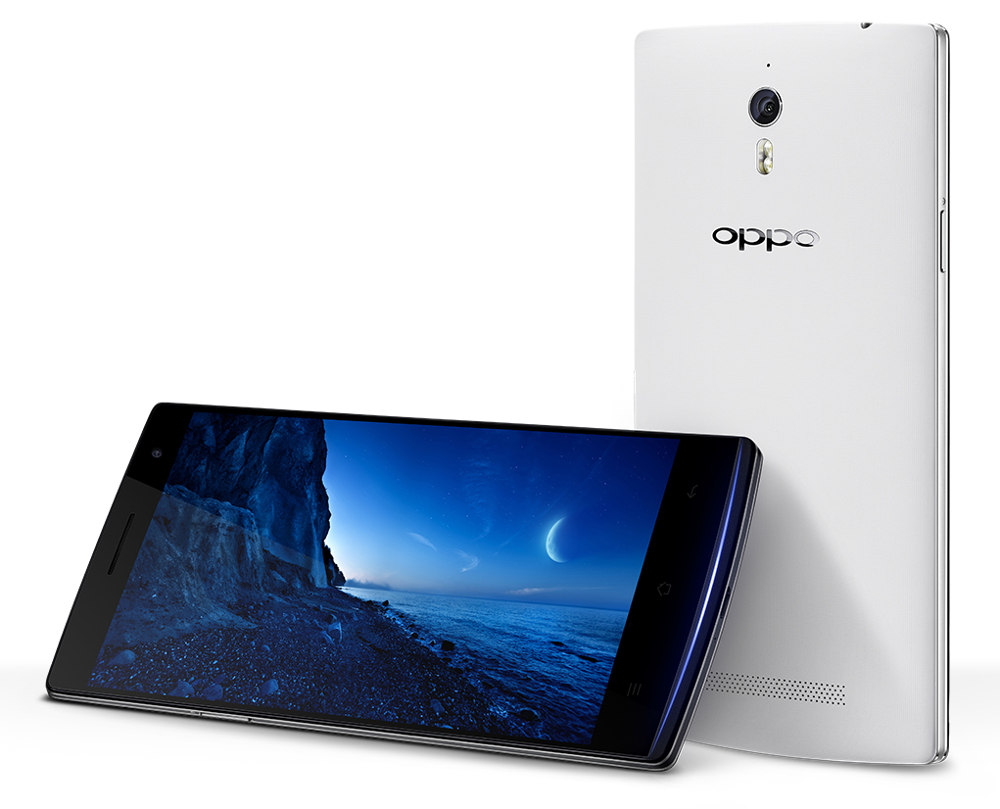
Oppo has finally unveiled the Find 7, the company’s latest flagship smartphone at an event in China. It has a 5.5-inch (2560×1440 pixels) Quad HD 538ppi LTPS display from JDI with Corning gorilla glass protection and Touch-on-Lens technology, powered by a 2.5 GHz Qualcomm Snapdragon 801 (MSM8974AC) processor with Adreno 330 GPU and runs on Android 4.3 (Jelly Bean) with Color OS 1.2 on top. It has a 13-megapixel camera Sony IMX214 stacked sensor with 6-element lens, f/2.0 aperture and uses software enhancements to capture images at 50-megapixel (8,160 x 6,120 pixels) resolution. The camera is also capable of shooting RAW images and has 4K video recording. It has a 5-megapixel front-facing camera with f/2.0 aperture.
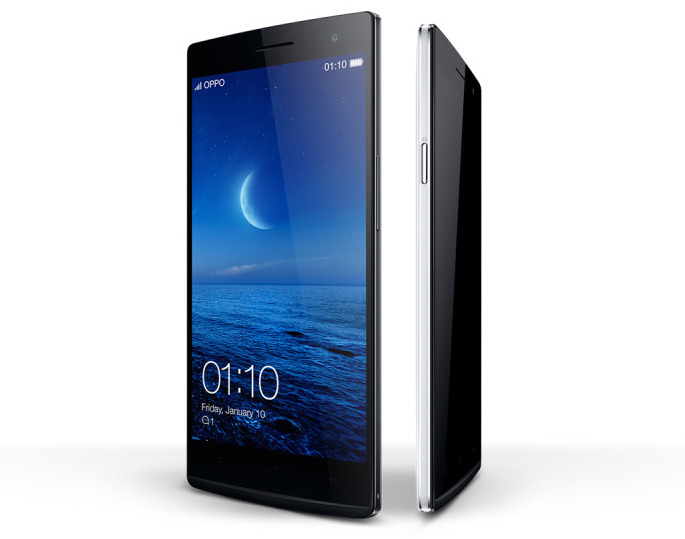
It has MaxxAudio for enhanced audio experience to offer the best audio even in low-frequency. It packs 3000 mAh battery with VOOC fast charging technology, capable of charging the battery to 75% in 30 minutes. The screen has Content Adaptive Backlight Control (CABC) system into the screen panel that reduces power consumption by reducing the brightness of the screen automatically.
Oppo Find 7 specifications
- 5.5-inch (2560×1440 pixels) Quad HD display with Corning Gorilla glass 3 protection
- 2.5 GHz quad-core Snapdragon 801 (MSM8974AC) processor
- Dimensions – 152.6x75x9.2mm, weight: 171 grams
- Color OS 1.2 on top of Android 4.3 (Jelly Bean)
- 13MP rear camera with Dual-mode LED Flash, Sony Exmor BSI sensor, f/2.0 aperture, 4K video recording
- 5MP front-facing camera with BSI sensor, f/2.0 aperture
- 3GB RAM, 32 GB internal memory, 128GB expandable memory
- 4G LTE / 3G, Wi-Fi 802.11 ac (2.4/5 GHz), WiFi Direct, Bluetooth 4.0, GPS, USB OTG
- 3000mAh battery with VOOC fast charging
Oppo announces Find 7a with 5.5inch Full HD display and Snapdragon 800 SoC
Oppo announced their latest flagship device – Oppo Find 7 and its slightly trimmed down counterpart – Oppo Find 7a. Oppo Find 7a comes with a 5.5inch Full HD display sporting a pixel density of 403ppi and has most other features similar to the Oppo Find 7 which comes with a 5.5inch Quad HD display sporting a pixel density of 538ppi.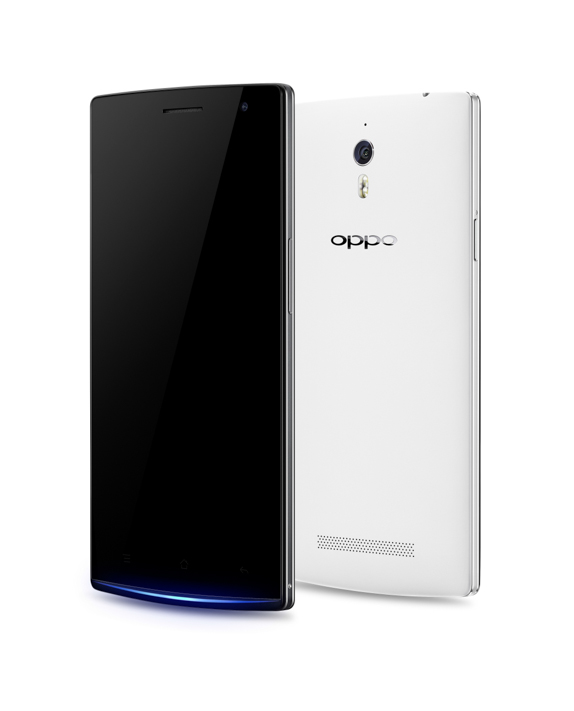
Oppo Find 7a will be affordable one among the two and the specifications are as follows
- Processor: 2.3GHz Qualcomm Snapdragon 800 Quad Core (MSM8974AB) GPU: Adreno 330
- Memory: 16 GB ROM (expandable) / 2GB RAM
- Battery: 2,800 mAh (Rapid Charge)
- Screen: 5.5-inch, 1080p Full HD IPS display (1920 x 1080 pixels), 403 PPI, 16 million colors
- Touchscreen: Multi-touch, capacitive screen, Gorilla Glass 3, supports gloved and wet touch input
- Camera: 13-megapixel IMX214 Sony sensor with dedicated ISP, Dual-mode LED, Aperture f/2.0
- Scene modes: Normal, Panorama, High Speed, Rewind, Beautify, Slow Shutter and .GIF mode
- Colors: Midnight/White
- Dimensions: 152.6 ×75 × 9.2 mm
- Weight: 170 g
- Operating System: ColorOS 1.2.0 based on Android 4.3
Oppo Find 7a is expected to arrive in Chinese stores by March 20, 2014 and will be priced at 2998 Yuan(approx Rs. 29,500).
HTC One 2014 certified by Tenaa, official specs confirmed
The HTC One 2014 leaks just can't stop and this time it's an official source that reveals some information – Chinese wireless authority Tenaa.The new flagship has a 5" 1080p screen, measures 146 x 70.5 x 9.5mm and weighs 157g. Those are about the same dimensions as the Sony Xperia Z2, which has a 5.2" screen flanked by stereo speakers.
The HTC One 2014 is powered by a Snapdragon 801 chipset with a quad-core Krait CPU clocked at 2.26GHz and 2GB RAM. Internal storage will be 16GB/32GB with a microSD card expansion slot.



HTC One 2014 (M8) photos from Tenaa
The question with the camera is a bit more complicated – it says 4MP and 16MP. There are two cameras on the back but could the difference in resolution for both sensors be that big or was something lost in translation? The video capture resolution is pretty clear though – 1080p doesn’t need translation.
We'll find out in less than a week as the HTC One 2014 (or as HTC calls it, "All New One") will be unveiled on March 25.
Sony announces Android 4.4 KitKat update schedule
Big news, Sony fans! Sony has just announced the availability of the Android 4.4 KitKat update for the Xperia Z Ultra, Xperia Z1 and Xperia Z1 Compact. The new firmware rollout starts right now for all three smartphones, but the process is gradual so it might take some time before the update notification pops up on your phone.
Here is the official change log:
- Google’s Android 4.4; KitKat as standard – bringing performance & UI optimisation… We’ve added our tweaked Status Bar and Quick Settings… now more intuitive and customisable (and pretty easy on the eye)… cleaned up to ensure you only get the notifications you really need
- If you’ve got a Sony PlayStation 4, you might recognize our new user interface – we’ve added the same sleek launch animation and livewallpaper across the lock and home screens
- We’re also uplifting Sony’s entire native app portfolio to the latest versions – bringing tweaked / improved / current experiences for (to name but a few): Messaging, MyXperia, Smart Connect, Small apps, TrackID, TrackID TV, Sony Select, Smart Social Camera and…
- Sony’s Media apps: WALKMAN, Album and Movies, with Sony Entertainment Network cloud service integration – a more converged and full Sony entertainment experience – Sony Entertainment Network & PlayMemories integration with a more intuitive UI, better download speeds, and more!
- Our unique custom interface experience: “Xperia Themes”, with downloadable UI packs from Sony Select – skin up to 280 assets across your Xperia smartphone with a variety of styles, and more to follow soon…
Sony has also confirmed that the newly announced Xperia T2 Ultra, Xperia E1 and Xperia M2 will get the KitKat treatment as well, but the availability will be detailed later.
Oppo Find 7 is official with QHD display and Snapdragon 801 SoC
Just as planned today Oppo made the Find 7 official at a dedicated launch evet. The Oppo Find 7 is the first smartphone to pack a 5.5" QHD (2560 x 1440 pixels) display making for the astonishing pixel density of 538ppi.
Oppo has been able to push so many pixels in 5.5" display thanks to a technology it calls Super Screen 2.0. The display is covered by Gorilla Glass 3 for extra protection and can be operated with wet hands.
Under the hood of the beastly Find 7 lies a 2.5GHz quad-core Snapdragon 801 MSM8974AC chipset, the same as the Galaxy S5. There's also 3GB of RAM and an Adreno 330 GPU plus 32GB of internal storage, expandable via a microSD card slot.
At the back of the Oppo Find 7 is a 13MP Sony IMX214 CMOS with a F/2.0 lens and LED flash. It is capable of recording 4K video and 720p slow-motion clips at 120fps. There's also an interesting mode called Super Zoom. It takes 10 photos and merges them into a single 50MP image. There's also a 5MP front-facing snapper.
Oppo Find 7
A really cool touch is the "breathing" notification strip below the display. It acts as a notification for incoming calls, unread messages and email.
Oppo's latest flagship is also available with a 5.5" 1080p display. Its internals have been slightly downgraded compared to the QHD display version of the phone, but the camera department has seen no changes. The "lower-resolution" version of the Find 7 will be powered by a Snapdragon 801 MSM8974AB chipset (with a quad-core Krait CPU clocked at 2.3GHz), 2GB of RAM and will pack 16GB of expandable internal storage.
The QHD Oppo 7 packs a 3000mAh battery, while the fullHD version makes do with a 2800mAh one. Oppo touts a new technology dubbed VOOC, which is capable of charging the battery to 75% in 30 minutes, which is really impressive.
ColorOS 1.2 is what powers the Oppo Find 7. The company announced it has struck a deal with the Bank of China enabling the Find 7 to make NFC-based payments to more than 250 POS-enabled stores.
Both versions of the Oppo Find 7 support LTE networks and measure 152.6 x 75 x 9.2 mm.
Oppo has also turned special attention to the audio characteristics of the phone. It packs special MaxxAudio speakers, which are said to deliver great bass. It comes with a special app dubbed MaxxEq, which will allow you to fine tune the sound as you desire. We are yet to see if Oppo's MaxxAudio is comparable to the HTC BoomSound soon enough.
The FullHD Oppo Find 7 weighs 170 grams, while its higher-resolution sibling is a tad heavier at 173 grams.
Oppo is pricing the QHD Find 7 at 3,498 CNY, which roughly equals 565 USD, while the fullHD version carries a 2998 CNY price tag, or about 480 USD. The FHD Find 7 goes on sale tomorrow, while the QHD one will launch in May or June.
Oppo also announced a smart wristband dubbed O-Band. It can track your sleeping patterns, remind you about missed notifications and record fitness data. It packs a vibration alarm, too.

Motorola unveils Android-powered Moto 360 smartwatch
Google announced its Android Wear, a project that extends Android to wearables today, and Motorola is among the first to make use of Google's latest innovation. Motorola has officially announced Moto 360, an Android Wear powered smartwatch.
Motorola's Moto 360 is said to come with a round face design and the company claims to have used premium materials to provide the much needed elegance. Motorola says "Moto 360 is everything you need, with a look that you want".
With Moto 360, you can keep yourself up to date with subtle alerts and notifications. A twist of the wrist now reveals who is calling or emailing you, what time is your next meet up or a friend's latest social status.
Motorola's latest timepiece (remember the Motoactv?) also comes with Google Now integration, which means you can literally talk to your wristwatch. Just like on smartphones, "Ok Google" command fires the Google Now application and you can schedule appointments, send texts, set an alarm or even take a note.
Moto 360 will be available in various designs across the globe, starting in the US this Summer.
Google announces Android Wear, LG is making a smartwatch
Google has announced it is working on Android Wear - a special Android version for wearable devices. Naturally the first target group of Android Wear is smartwatches, but the OS focus will expand to even more gadgets soon.Android Wear is a special miniature version of the popular mobile OS that will allow you to interact with your wearable via voice commands and you will receive straight answers both on-screen and as voice feedback. Here is what Android Wear can do for you:
- Useful information when you need it most. Android Wear shows you info and suggestions you need, right when you need them. The wide variety of Android applications means you’ll receive the latest posts and updates from your favorite social apps, chats from your preferred messaging apps, notifications from shopping, news and photography apps, and more.
- Straight answers to spoken questions. Just say “Ok Google” to ask questions, like how many calories are in an avocado, what time your flight leaves, and the score of the game. Or say “Ok Google” to get stuff done, like calling a taxi, sending a text, making a restaurant reservation or setting an alarm.
- The ability to better monitor your health and fitness. Hit your exercise goals with reminders and fitness summaries from Android Wear. Your favorite fitness apps can give you real-time speed, distance and time information on your wrist for your run, cycle or walk.
- Your key to a multiscreen world. Android Wear lets you access and control other devices from your wrist. Just say “Ok Google” to fire up a music playlist on your phone, or cast your favorite movie to your TV. There’s a lot of possibilities here so we’re eager to see what developers build.
A developer preview is already available right here. Developers can download it and tweak their existing apps to work with Android Wear. Google says many of them will probably require little to no additional updates.
Google has already partnered up with manufacturers such as Asus, HTC, LG and Samsung, plus chipmakers such as Broadcom, Imagination, Intel, Mediatek and Qualcomm. Android Wear-powered smartwatches are already in the works and will hit the market later this year.
Previous rumors saying LG will be making a Google-powered smartwatch turned out being the truth. LG has announced the LG G Watch, co-developed with Google, just minutes after Android Wear went official.
The rumors were spot on with the specs - the LG G Watch features a 1.65" screen with a 280 x 280 resolution, 512MB RAM and 4GB of built-in storage. The smartwatch will go on sale in Q2 this year.
Intel shows octa-core Core i7 extreme, confirms Iris Pro graphics in upcoming fifth-gen Broadwell
Over at the Game Developers Conference in San Francisco Intel has shown its latest beast – the Core i7 Extreme Edition – dubbed Devil’s Canyon. It’s an 8-core 16-thread processor with unlocked cores (allowing easy overclocking), support for the latest DDR4 memory and a better thermal interface.
Intel has also confirmed that its next-generation processors, Broadwell, will feature Iris Pro graphics. Broadwell chipsets will have 14-nanometer processors and will come with unlocked cores.
The Core i7 Extreme Edition will be available mid-2014, which could come right before Broadwell so it may be a good idea to hold off your upgrades.
Samsung unveils the NX mini smart camera with a new lens mount
Samsung unveiled a new mirrorless camera and it’s tiny – the Samsung NX mini is 22.5mm thick and its metal body weighs 158g. It may be tiny, but it’s smart – the NX mini a smart camera to boot, though Samsung is mum on the OS (it’s most likely Tizen).
With a 3” flip up screen, the NX mini is a selfie-taking machine.
The camera has a metal body and continues Samsung’s leather obsession. It packs a 1” BSI sensor with 20.5MP resolution. The camera reach shutter speed of 1/16,000s and does 6fps continuous shooting. On the video recording side, it captures 1080p video at 30fps.
Since Samsung made the camera so small, it needed a new lens mount system. This means you’ll need new lenses. There are three new lenses:
- 9mm f/3.5 ED
- 9-27mm f/3.5-5.6 ED OIS
- 17mm f/1.8 OIS
Anyway, the Samsung NX mini features Dropbox and Flickr integration. There’s Wi-Fi and NFC for quickly pairing with smart devices (phones or tablets), so users can easily transfer photos from the camera, send photos to up to 4 devices or use the Remote View Finder Pro app.

The NX mini camera is available now at $450 with the 9mm kit lens and it’s $550 if you want the 9-27mm lens instead. The 17mm f/1.8 lens will be available in a few months. The advanced Adobe Lightroom 5 image editing software is included in the package to handle image processing.
Sony announces ‘Project Morpheus’ virtual reality system for the PlayStation 4
Sony has revealed a new virtual reality system, called ‘Project Morpheus’, exclusively for use with the PlayStation 4 console. Project Morpheus, which has been in development for over three years, is similar in concept to the Oculus Rift and will immerse the players in the game world by strapping a pair of screens to their eyes and tracking their head movements.
Morpheus has two 960 x 1080 displays inside, one for each eye, which add up to 1920 x 1080 resolution for both eyes with a 90 degree field of view. Just like the Oculus Rift, these stereoscopic displays help enhance the 3D experience and make you feel part of the game.
Along with the built-in accelerometer and gyroscope, Morpheus also works in conjunction with the PlayStation Camera, which accurately tracks the motion of your head so the game responds to the way you move your head. If you have a PlayStation Move controller, you can use it with compatible games as a weapon, such as a sword, for an even more realistic experience. Morpheus has a 3D surround sound system that envelops you in sound and simulates sound from above and below your head, as well as pans the sound around as you move the head.
Project Morpheus is still in development and Sony will be releasing the software development kit for developers to include support for the hardware in their games. There are no release dates available yet for the SDK or the device itself.
Details of entry-level KitKat Android Samsung G310 surface
 Android
4.4 KitKat supports fairly low-end devices with as little as 512MB. It
wasn’t meant for aging devices though, instead it was to enable
affordable new handsets. One of those will be the Samsung G310.
Android
4.4 KitKat supports fairly low-end devices with as little as 512MB. It
wasn’t meant for aging devices though, instead it was to enable
affordable new handsets. One of those will be the Samsung G310.It was certified by the FCC, showrf up on import manifests on Zauba, a NenaMark 2 benchmark and there’s a user agent profile. Stringing the info from all these together, here’s what we get.
The Samsung G310 will have a 4” WVGA screen (480 x 800 pixels). It will run Android 4.4.2 on a Broadcom chipset with two Cortex-A9 cores @ 1.2GHz and a VideoCore IV GPU.
On the connectivity side there’s optional dual-SIM, Wi-Fi b/g/n (2.4GHz), Bluetooth 4.0 + LE and NFC. The battery is a 5.7Wh, 3.8V unit meaning 1,500mAh capacity. The device's footprint measures 121 x 62.7mm.
There's no launch date or pricing info yet, not even a spy shot of the device. Still, if the Samsung G310 is already in testing, we probably won't have to wait long.
Apple iPhone 5c with 8 GB is now official
The wing man to the flagship iPhone 5s hasn't been selling all too well around the world and today, as expected, Apple is taking a step to fix that.Meet the 8GB Apple iPhone 5c. The phone has appeared on UK carrier O2's website with a variety of tariffs and prices. With the highest 43 quid a month contract the smartphone will be free, but there's also a £410 option with a £13 plan. French carrier SFR has also listed the new iPhone 5c version and a huge number of other operators are expected to join the list in the following hours - basically anyone who has offered the iPhone 5c so far should also get the new version.

The US Store doesn't feature the device yet but the UK Apple Store offers it for £429, compared to £469 for the 16 GB model and £549 for the 32 GB.
In Germany the prices go as follows: €549 for 8GB, €599 for 16GB and €699 for 32GB iPhone 5c.
This means that the 8GB Apple iPhone 5c will cost £40/€50 less than the 16 GB version. It's hardly the kind of bargain that will turn an underperformer in a best seller, but you never know.
OnePlus phone to have 13MP / 2160p Sony camera
OnePlus is pleasantly engaged with the budding community in its forums and posted details on how and why the engineering team chose a camera for the upcoming OnePlus One phone.The team chose Sony’s Exmor IMX214. It features a 13MP sensor and a wide f/2.0 aperture. To correct edge distortion, the camera has a sixth lens element (where most phone cameras have four elements and even many flagships settle for five).

The OnePlus phone will feature Image Stabilization Plus (IS+), which "reduce noise and shakiness" but this sounds more like digital stabilization since it talks of "over 120 algorithms" rather than proper optical stabilization.
Anyway, the wide aperture, Exmor sensor and IS+ promise pretty good low-light performance.
On the video side, the camera will capture 4K video (2160p) and slow-motion 720p @ 120fps clips. For selfies and video calls, OnePlus has selected a 5MP camera.
The goal of the team behind the phone is to produce good photos and videos in real-life situations, without compromising the portability of the device (and "without an ugly protruding camera").
Sony Russia details Xperia T2 Ultra Dual launch and price
The 6" Sony Xperia T2 Ultra phablet went official in January and will be available in single and dual-SIM models. It is expected to hit the UK in April and to cost less than €400 (£330).
Today Sony Russia has issued a press release with pricing and availability details on the Xperia T2 Ultra Dual. The dual-SIM flavor of the phablet will become available in Russia by the end of the month for RUB 17,490 or about €350.
We guess the global launch will follow soon after, in the beginning of April, just like previous rumors have already suggested. You will be able to get the Xperia T2 Ultra, like most of the recent Xperia phones, in white, black or purple color.
ZTE Nubia X6 to have a 75MP camera? Probably not
ZTE is continuing to tease the Nubia X6 flagship smartphone on its Weibo account. The first image calls the upcoming phone an “unstoppable metal temptation” and shows off a portion of the phone’s metallic build.The ZTE Nubia X6 will reportedly be thin and with slender bezels. Other teasers promise a big battery, stereo speakers and optically stabilized camera.


A peek at the metal fram of the ZTE Nubia Z6 • An alleged sample photo has leaked
A post by analyst firm Mobile China claims the Nubia X6 will have a 75MP camera and ZTE’s Weibo account reshared that news teasing an alleged sample photo.
Here’s the image below, keep in mind the image measures 11,520 x 6,480 pixels but weighs in at just 4MB. The image quality is pretty poor, which combined with the small file size leads us to believe this is a simple hoax with an upscaled image.

The alleged camera sample at 75MP resolution
Oppo’s upcoming Find 7 was supposed to have a 50MP sensor, but that seems to have been wrong too.
Microsoft confirms Windows Phone 8.1 as the official name
We all knew Windows Phone 8.1 is coming. It has already leaked numerous times before in tips, screenshots and even detailed videos.
Thanks to all those leaks we know a notification center with toggles is
coming, a brand new voice assistant is on the way too, among other
features.But what will be the next Windows Phone version called? Well, its name is rather boring, though expected, and now confirmed officially - Windows Phone 8.1.
Microsoft has already started updating the compatibility section of the apps in the Windows Phone store. We can see Windows Phone 8.1 version above the previous Windows Phone 8. As it turns out most of the Windows Phone 8-copatible apps, if not all of them, are compatible with the next version of the OS. But don't expect those developed specifically to work with the WP 8.1 to be backward compatible due to the new APIs and services.
Windows Phone 8.1 is expected to be detailed on the upcoming Microsoft BUILD conference on April 2. The Developer's Preview WP8.1 update should be launched during BUILD, while the final version should become available to every WP8-compatible device out there a few weeks later.
EU edges closer to the universal mobile phone charger
Members of he EU Parliament have voted last week for an update to the radio equipment laws, which will introduce a common charger for mobile phones sold within the Union. The common charger is believed to reduce environmental waste and make life easier for consumers.
Currently in a draft version, the new Radio Equipment Directive foresees a cleaner environment thanks to the universal charger. Rapporteur Barbara Weiler said that more than 51,000 tonnes of electronic waste globally will be saved.
The design of the universal phone charger is going to be based on already widely spread microUSB connector. The draft law received a very positive reception with 550 votes for and only 12 against. Before any further development on the matter, the law needs to be approved by the European Council. Afterwards, if it gets accepted, member states will have two years to incorporate the rules into their national laws, while manufacturers will have one year more to comply.
EU's efforts to implement a universal charger started in 2011, when it started sampling suggestions from major phone makers.
LG Lucid 3 VS876 for Verizon gets leaked
evleaks has leaked yet another smartphone, this time the LG LG Lucid 3 (VS876) for Verizon. evleaks did not leak the specifications of the phone, we think it could be one of the F-Series phones that LG announced at MWC this year, specifically the F90. This means it could have a 4.7-inch, qHD IPS display, 8 megapixel rear camera with LED flash, 5 megapixel front camera, Qualcomm Snapdragon S4 MSM8226 with 1.2GHz quad-core CPU, 1GB of RAM and Android 4.4 KitKat.


No comments:
Post a Comment